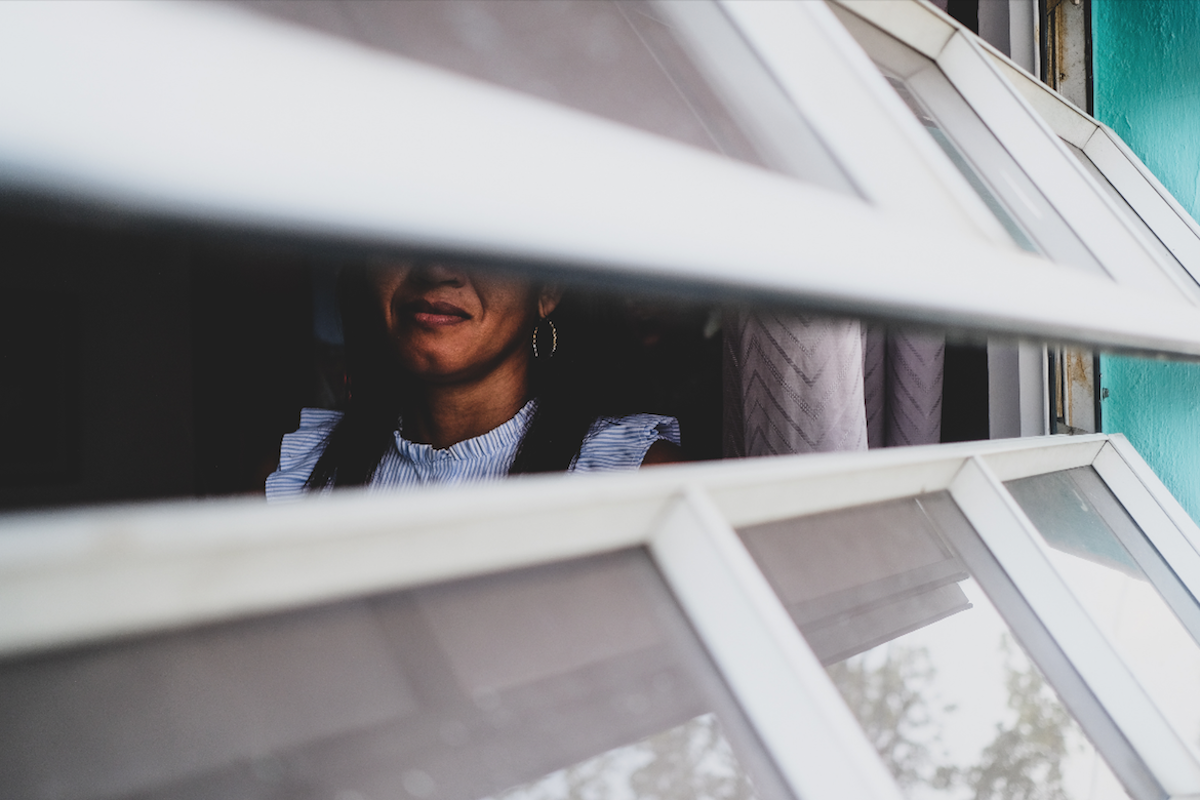

Many Dominican mothers have not been able to return to their jobs since the coronavirus emergency began in March. (Photo by Nahira Montcourt | Centro de Periodismo Investigativo)
By José M. Encarnación Martínez
SAN JUAN — The absence of a public policy on immigration issues in Puerto Rico has triggered mothers and their children to face needs that have worsened with the coronavirus emergency. This is seen in fewer job opportunities, delays in their immigration processes, and families that cannot access essential services, such as education for their children.
This is because the challenges of the migratory phenomenon are not solved with vaccines, despite living during pandemic times.
Carla, whom we identify with a pseudonym to protect her identity, is 17 years old, in the 12th grade, is Dominican, and these days is wondering what will become of her life when she finishes her senior year in high school “without papers.”
“I wish that my interest in getting into college would not be a constant source of worry,” said the young woman in an interview with the Center for Investigative Journalism (CPI, in Spanish).
Carla says she is part of “a shadow.” This is how she defines the Dominican community in Puerto Rico. Like many public school students, she has not received the computer promised by the Department of Education (DE). As for her Immigration Court appointments, they have been postponed over and over since the beginning of the year, generating anxiety and stress over the transition to college life that is just around the corner.
From the living room in her home, one of many rental properties that survive amid the abandonment of the Río Piedras urban center, diversity is observed. Río Piedras is a community where Dominicans, Haitians and even Palestinians mix, most of them in a state of poverty that is perceived during a walk from José Gándara to 65 de Infantería Avenues.
The U.S. Census Bureau’s Community Survey shows that in 2018, the number of people born outside the United States or the U.S. territory living in Puerto Rico was 85,348. Of that number, 42,728 were reported not to have U.S. citizenship. However, there is no official data to help determine the size of the Dominican population, despite the fact that community organizations such as the Center for Dominican Women say there are as many as 200,000 on the island.
Carla perceives herself as invisible. She does not feel recognized by the Dominican or the Puerto Rico governments. “Life for us is hard, very hard”. She says this because during the pandemic it has become necessary to think —on a daily basis— about the uncertainty amid academic responsibilities and the challenges at home. You have to “handle emotional pressures carefully,” she says.
Along with the young woman, who aspires to train as a medical technologist, are her two brothers with her on the family couch. She is the only one who does not have citizenship. She remembers how she arrived in Puerto Rico three and a half years ago, after her mother —whom we will call Carmen to protect her identity— learned that the little one-year-old girl she had left under the guardianship of her grandmother in San Pedro de Macorís, in the Dominican Republic, was now 13 years-old and had gotten a student visa to travel to an educational conference in New York.
“My past is what makes me the person I am today,” says Carla. “I had never been with my family. I learned about them through photos. I had no physical memory of my mom. At first, I had to get used to living with my own family. Mom was a stranger to me,” says Carla.
Carmen listens to her daughter watching from the dining room. She carefully reviews the memories of that day when she risked everything on the high seas: a two-day trip in an old wooden boat. She focuses on the most important chapter of the journey: the reunion with her daughter just over a decade later.
“I saw her on video [when she was going to New York on a study trip] and I couldn’t miss the opportunity for her to come to Puerto Rico. We asked for additional permission for her to make the trip from New York to Puerto Rico and when we saw her it was such a powerful thing that I couldn’t let her go back to my country [Dominican Republic] again without her mother,” says the mother, who has been in Puerto Rico for more than 15 years and who, like her eldest daughter, struggles to obtain U.S. citizenship.
“I went to the [Dominican] Consulate and explained my daughter’s situation. I spoke with the consul to find out how they could help me, and he told me that what I had to do was send my daughter back to the Dominican Republic. Legally, he told me, there was nothing he could do. He didn’t give me any more options. I was advised by a lawyer who told me that if I married my partner, my daughter’s status could change, but she’s already in 12th grade. We’re waiting to see what happens. I know that my daughter had to go back to my country, but how? I wasn’t going to send her away after so long.”
The Student Bill of Rights states that every student residing in Puerto Rico, regardless of their immigration status, will have the right to a free and safe public education. The law provides that no one can be denied access to education, even when their immigration status cannot be confirmed. At the college level, however, a social security number is required, for example, to apply for financial aid that would cover the costs of enrollment.
During the pandemic, both she and her daughter are more vulnerable than ever, Carmen said. That also affects her other two children, of course. This home, like many others during the pandemic, has been transformed into a school. And since March, Carmen hasn’t made any money as a domestic worker. Thinking about a COVID-19 contagion, for example, is an additional concern. Despite so much effort and struggle, the mother and the 17-year-old are not entitled to health insurance.
Doña Carmen reminisces on the last difficulty she experienced in a hospital in Puerto Rico.
“My daughter was ill when she got here from New York. She had a tumor in one of her breasts. God was so great and so fair that he brought her into my life at that exact moment. I had no medical plan. She had to have urgent surgery and we didn’t have enough money. I thought she was going to die. I hadn’t seen her for so long and I thought she would die here.”
The Emergency Medical Treatment & Labor Act (EMTALA) establishes that hospitals must attend to all emergencies without identifying immigration status. When a patient does not have medical insurance or cannot pay for services, they are usually referred to state hospitals. At the time, the community stepped up to help Carla.
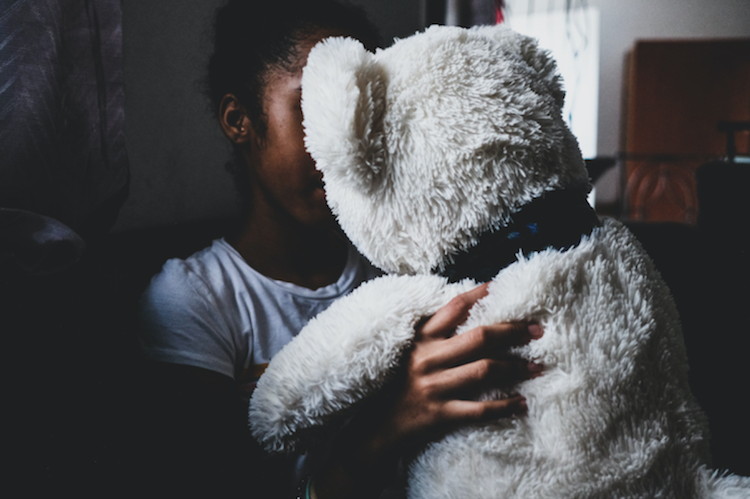

The Department of Education’s disorganization regarding the distribution of materials for online classes is another obstacle in the life of immigrant families living in Puerto Rico. (Photo by Nahira Montcourt | Centro de Periodismo Investigativo)
Community Provides Only Response
The support this family receives is the result of community self-help. When they go over the challenges they have overcome, they talk about Proyecto Aurora, an effort by the University of Puerto Rico’s Río Piedras Campus (UPR)’s teaching staff and students, coordinated by School of Education Professor Gladys Capella Noya, to help low-income children and their families in the neighboring community. They also mention the aid from the Río Piedras Center for Urban, Community and Business Action (CAUCE, in Spanish), another effort by the UPR campus to revitalize the urban center and communities in the area.
“CAUCE is always looking out for the community. They always come here and provide support to the kids and the families. They help with homework and many important things. The Department of Education still hasn’t given us anything. We have the internet because the Aurora Project gave us a hand with that service, they even donated a computer to us. And I have to say that in my daughter’s medical process, Professor Gladys Capella Noya was a very important person too, because she helped us in a way that we could have never imagined,” said Carmen.
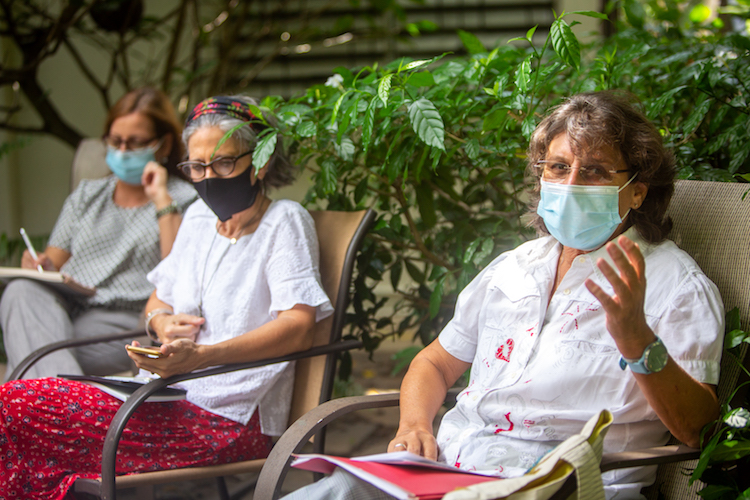

Members of the Committee of the UPR (Río Piedras campus) spoke with CPI about the community efforts that are born from the institution to serve the Dominican population, especially in the Río Piedras area. (Photo by Nahira Montcourt | Centro de Periodismo Investigativo)
Dspite a request for information submitted a month ago, the DE did not provide the CPI with information related to Dominican students in the public education system. Nor did it offer data that shed light on the challenges of immigrant students with or without papers within the public system, or of the agency’s efforts, if any, to address these cases.
The Institute of Dominicans Abroad (INDEX, in Spanish) also lacks specific data on this type of profile. Despite the fact that its mission is to promote and execute strategies, programs, and proposals directed at the Dominican community living in Puerto Rico, its director, Adalberto Bejarán, told the CPI that as an institution they do not have the capacity to address situations of this nature. Bejarán said that his job, regarding these problems, consists of referring “cases that have merit” to the Dominican consulate or nonprofit organizations. He did not define the elements of such merit.
He only spoke of a study of the profile of Dominicans in Puerto Rico that has not been completed “for economic reasons.”
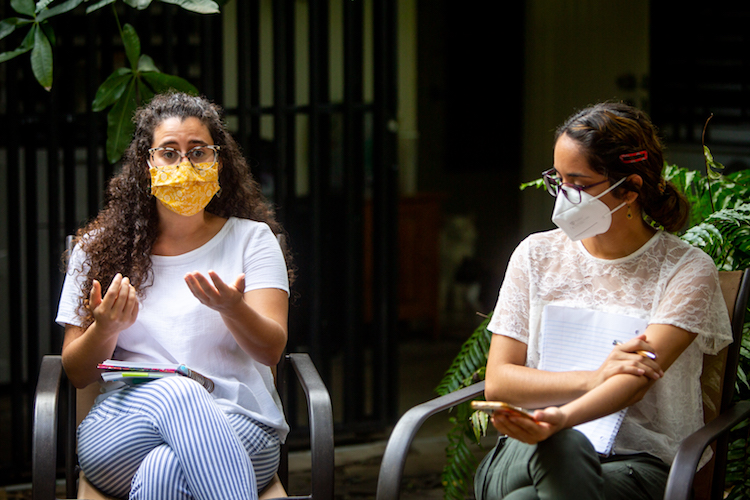

Mariana Hernández González, a master’s student at the Faculty of Education, together with Mabel Cruz Alequín, a doctoral student at the Faculty of Education, work in the Collaborative Project of Accompaniment to Nearby Schools, an initiative the Faculty of Education, teachers and students from various departments. (Photo by Nahira Montcourt | Centro de Periodismo Investigativo)
Carmen, who is married to a Puerto Rican, deals with her family’s needs, in part, with the help offered by community organizations and from the Dominican community . There is no other way.
“The Dominican community is very united. We have had to fend for ourselves. Particularly in Río Piedras, where there are many of us, and many are illegals. The biggest problem now during the pandemic is that there is no work for Dominicans. There is nothing. We exist in the shadows,” she said.
The Fear at Home and the Children
At the El Prado housing complex, also in the capital city of San Juan, Doña Luz orders Luisito, a baseball lover who is barely nine years old, to get in the house and keep quiet. Luz, who also uses a pseudonym to protect her identity, arrived in Puerto Rico 20 years ago and still does not have U.S. citizenship, “despite many efforts and multiple orientations.”
She’s a domestic violence survivor. She explains how she divides her time braiding people’s hair out of her balcony and assists two special education kids.
A study carried out jointly between the Center for Dominican Women and the University of Puerto Rico in 2015 found that of 900 immigrant women consulted, 97% reported having experienced emotional and psychological violence. Meanwhile, 81% said they had suffered physical violence and 72% sexual violence. Luz recalled the first time she called the authorities on her attacker, her first partner in Puerto Rico. “When the police arrived, he just said that I was illegal, and since I couldn’t show papers, I went from being the victim to being sent [to the authorities].”
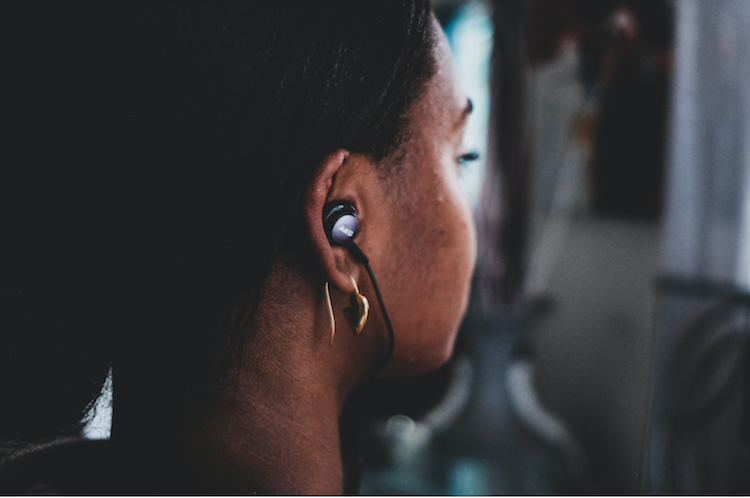

Data from the Dominican Government indicates that half of the population that emigrates to Puerto Rico is made up of women that live in poverty. (Photo by Nahira Montcourt | Centro de Periodismo Investigativo)
In this home, the children study in public schools. They were born in Puerto Rico. Unlike Carla, the 12th grade student, they grew up hearing that their mother could be deported to the Dominican Republic at any time. For this reason, Luz explains, the kids don’t lose track of her. And more so now during the pandemic.
“If I leave this house, my phone doesn’t stop ringing. It’s: ‘but mommy, where are you going, but mommy, when are you coming back, but mommy, you can’t take long.’ All the time. And during the pandemic, what can I tell you, it has been a difficult, difficult situation.”
Luisito interrupts. “It’s that I know what goes on in this house,” he says. Luz tells him to be quiet. “It’s that I know, I know what you’re going through,” the nine-year-old boy contends. His routine: seeing Mom trying to fill the fridge, jobless and without full freedom. He does not take his eyes off us. He feels fear in his own home when strangers visit them.
“I have had to seek psychological therapy,” confesses Luz. “My last court date was in March of last year and they keep delaying my appointments. They canceled my appointment when the earthquakes happened, then the pandemic began, and they’ve canceled my appointment twice. And my children don’t understand that other part.” Luisito insists. “I know.” When Luz talks about court, she is referring to the federal Immigration Court.
She says that whenever there is a court hearing, she has to emotionally prepare her children “two or three weeks in advance.”
“It’s: ‘Mommy they’re going to deport you; Mommy, but is everything going to be okay?” When I’m at those hearings, my eldest daughter gets depressed and doesn’t want to attend her classes,” Luz continues, now talking about what the norm is in this house, even before the pandemic.
The computers promised by the DE have not arrived here either. There is no internet service in the home. A cell phone is still the main tool for completing school tasks. But as job opportunities have dwindled, phone service has already become a new burden.
“I owe like $700 on the phone. That has been a struggle. It’s more stable now, because a while ago they cut off my service and I had to negotiate with the company so that they would set up a payment plan and the opportunity to pay every two weeks. The kids couldn’t connect, because that’s the internet we use,” said the mother. She insisted that she has done everything possible so that her children can do their homework.
The study —conducted by Elithet Silva Martínez, Romelinda Grullón Miguel, Noelia Delgado Rodríguez and Delia Figueroa Ocasio— identified that about 75% of immigrant women in Puerto Rico, victims of domestic violence and sexual assault, survive on $12,000 a year or less. On the island, only 10% of the families surveyed by the Census Bureau in the 2018 Community Survey reported annual income between $10,000 and $14,999. About 58% of the 731,354 households surveyed by the Census Bureau were headed by a woman.
“We have a borrowed computer, but no internet. School has become an additional burden. I have two boys, a 9-year-old and a 4-year-old, who are both in special education. The Department of Education at this point has not contacted me to find out about the 9-year-old’s routine. There has been no call at all for any assistance or anything. And I signed up for that. There are times when this child cannot take classes.”
For Luz, life is a daily struggle, “making do to eat.”
“Even if I file my taxes, I’m nobody. I don’t qualify for anything. I can pay taxes, but I’m not even entitled to the food and financial assistance card. It’s very unfair, because I have been working and working in Puerto Rico for 20 years, paying what I have to pay and I don’t have the right to even basic services, such as health insurance. I couldn’t even apply for unemployment during the pandemic. They know that I work, because they have that information. I file it. I get sick and have to make sacrifices to go to the doctor. There’s no food at home and I have to do what I can to get those food handouts boxes. My children are citizens, but I have to pay for everything,” she says. “If that COVID-19 hits me, I’ll die, because I don’t have the means to pay for doctors right now. Puerto Rico has to do something for the Dominicans who work and pay taxes. I haven’t seen a politician saying how they’re going to help the Dominican community and our children.”
The president of the Puerto Rico chapter of the American Immigration Lawyers Association (AILA), María del Rosario García Miranda, said in an interview with the CPI that the legal scenario for families headed by undocumented mothers is increasingly trickier. The government of Puerto Rico’s lack of a public policy to address its challenges and make its needs visible in the context of the pandemic, limits any effort to guarantee rights or claim aid for immigrants.
“Before Hurricane María, we had a population that, despite their immigration status, had the chance to go out and look for jobs. Even after the hurricanes, the circumstances allowed them to work, despite the complexity of being undocumented. Now with the pandemic, finding work has been a problem. To that we add that because they’re undocumented in Puerto Rico, they can’t access tools such as the PUA [Pandemic Unemployment Assistance]. And it’s important to bear in mind that many of these people, despite the fact that they’re in Puerto Rico in an irregular circumstance, have a provisional taxpayer number and file returns with the Treasury. But that provisional taxpayer number is not accepted for the PUA,” the attorney said.
The government of Puerto Rico is in full transition. Governor-elect Pedro Pierluisi is considering a return to face-to-face classes “as soon as possible,” while Health Secretary Lorenzo González believes that will be possible starting in February or March 2021. COVID-19 infections continue to increase. since the beginning of the pandemic through Nov. 30, the Department of Health reported 7,118 positive cases confirmed by molecular testing among those under 19 years of age. During that period the agency also reported 214 probable cases in this population and 4,496 suspected cases.
For Luz, the panorama described by the Health Secretary is alarming.
“I’m a stylist. I worked in a beauty [salon]. Now, I’m home. A customer comes in and I’m here at home. It’s much more difficult to get that income. We had two puppies and we gave them away because there was no money for food. It’s like going through [Hurricane] María again, but worse.”
Luz is right. The hurricane of poverty strikes every day, at any time and under the radar.
No Alternatives Without Public Policy
Undocumented immigrants were excluded from the federal Coronavirus Aid, Relief, and Economic Security Act (CARES Act). This measure, enacted on March 27, aims to provide emergency financial assistance in the context of the pandemic. Immigrants who pay taxes using an Individual Taxpayer Identification Number (ITIN) were excluded, as were their US citizen relatives who jointly filed their tax returns. According to the Center for Migration Studies in New York, that left about 15.4 million people without financial support across the United States. However, several jurisdictions with foreign-born populations took steps to fill that gap.
Contrary to Puerto Rico, in California, Maryland, Oregon, Arizona, Connecticut, Illinois, Washington D.C. and Texas, authorities extended economic assistance measures for undocumented immigrants during the pandemic.
In the case of public school students, Gov. Wanda Vázquez and the Education Secretary Eligio Hernández announced the availability of a $90 million federal funds allocation to subsidize the payment for internet access to all students and teachers. The government aid will cover internet payments until May 31, 2021 and that each applicant will choose the service of their preference, as long as it is enrolled in this program. According to agency spokesman Alexis Ramos Deserved, the only requirement for the subsidy is that the student is enrolled and has an SIE (Student Information System) number.
Meanwhile, attorney García Miranda acknowledged that the pandemic has affected job opportunities of a large part of the undocumented population, particularly for mothers. She explained that even before the pandemic being undocumented represented a major obstacle for many Dominican mothers, at least there was the possibility of earning money working in domestic services, one of the most common jobs among this population. An example is Doña Carmen, the mother of 17-year-old Carla, the undocumented student who wants to be a medical technologist.
“Governor Alejandro García Padilla created Act 97 of 2013 so that people with an irregular migratory status could get their driver’s license. But beyond that, the Commonwealth has no public policy to address this issue. In the case of financial aid during the pandemic, because they’re federal funds, you have to abide by the federal guidelines and parameters, which clearly establish that the person must be a permanent resident or a U.S. citizen to be entitled to any of the benefits.”
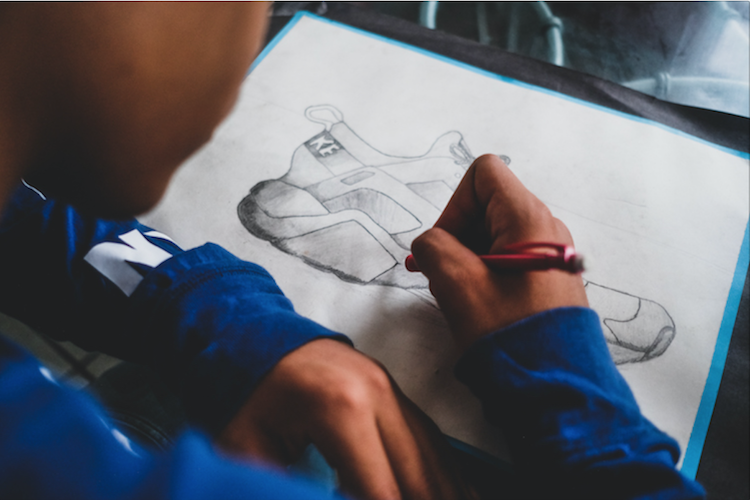

The Department of Education did not provide data on the Dominican population within the public education system. (Photo by Nahira Montcourt | Centro de Periodismo Investigativo)
Neither Numbers Nor Citizens
Professor Jorge Duany, author of the book The Dominicans in Puerto Rico: Migration in the Periphery, says the island lacks a good database on migration or on immigrants in general. In the specific case of Dominican mothers, Duany claims that having reliable information that can steer public policy is a must to understand the magnitude of the problems and work on effective responses.
For the professor, there are two basic sources to measure these issues: the census that is carried out every 10 years “and that creates an information gap,” since “they are estimates, calculations that are made based on certain statistical premises at the federal level, not by Puerto Rican authorities;” and the Department of Homeland Security (DHS), “which annually gave us figures that are still useful,” of how many people have been admitted, from which countries, where they have settled and how many have been deported.
However, Duany believes there are more unanswered questions than answers.
“There’s a mess here over the legal competition of a federal agency versus a state agency. That has been a recurring issue since this great Dominican migration to Puerto Rico began in the 1960s. There have been times when the Commonwealth has taken the initiative [to serve the Dominican population]. But the issue is still on the table, it hasn’t been resolved because it hasn’t been addressed in the correct way and with the necessary profoundness. There’s a scarcity of reliable information on the Dominican communities and from other countries as well, as is the case of the Chinese [community], for example,” said the current director of the Cuban Research Institute (CRI) at Florida International University (FIU).
Meanwhile, at the Dominican Women’s Center, they have had to reinvent themselves in these pandemic times so that the little aid that exists reaches the people who need it. Its director, Romelinda Grullón, explained to the CPI that they have had to diversify ways to find the needy, and who they can help.
“We’ve had to knock on many doors, reach out to other organizations and people in general to help us with funds and initiatives, such as the Food Bank,” which helps fight hunger.
Like Duany, Grullón believes the lack of statistics to be a major obstacle. She said that community efforts need this data to respond effectively to problems that the State can’t handle, including the family conditions of many students. She adds that the invisibility of the immigrant community, beyond the Dominican people, is more evident than ever during the pandemic.
“We are many, but we don’t know how many we are. We know that there’s a large population that’s still very irregular, that hasn’t been able to legalize their migratory status and that makes the count much more difficult. That’s why we have intensified our efforts, because we know that the figures they give aren’t real. The bulk of the people who are undocumented, that number, isn’t known,” he says.
Legal advice, social work, psychological therapies, follow-up of women victims of domestic violence, and food delivery are among the services that the Dominican Women’s Center has offered more regularly during the pandemic, Grullón noted.
Since the pandemic began, she said, the organization has helped thousands of people.
“It’s important that politicians come see the efforts of the organizations and inform themselves from the communities, because they aren’t aware of many situations. It’s necessary to direct funds that aren’t exclusively federal to support this population, especially women, who don’t have access to that federal support,” she said.
The data on the Dominican migrant population in Puerto Rico, collected in the Migratory Profile of the Dominican Republic (2017) and published by the National Institute of Migration of the Dominican government, show that more than 55% of the migrant population on the island are women. Likewise, the data reflect a higher percentage of Dominican households living in poverty in Puerto Rico (48.6%) than that registered for Dominican households in the United States (28%).
The numbers fall short to fully understand how this problem is experienced.
“When you’re a child you only say ‘give me’ in your mind. You don’t know how hard it is to fight for something you want, like working or studying in college,” said Carla, the young woman who wants to be a medical technologist.


